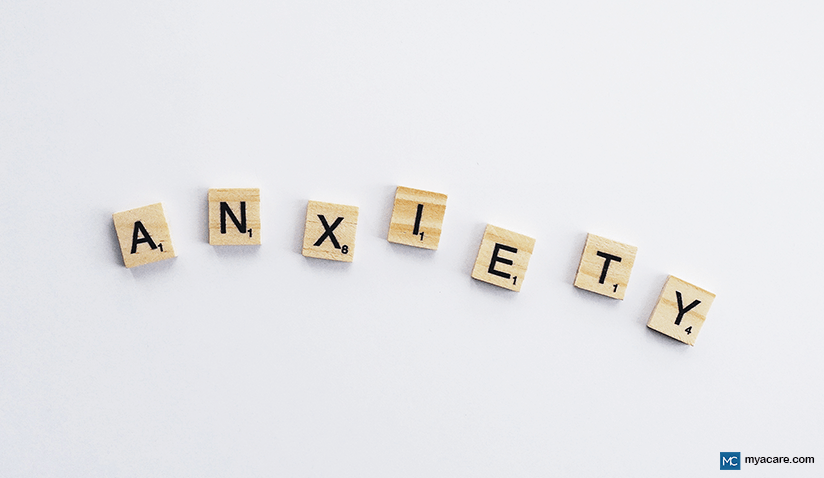DO ANXIETY RINGS REALLY WORK?

How do anti-anxiety rings work?
What are the benefits of anxiety rings?
Do you nervously click your pen or tap your fingers on the desk incessantly? Do you constantly stress about a work or personal event? Do you panic or experience anxiety and need something to calm your nerves?
There are many options for managing symptoms of anxiety. Meditation, medication, and therapy are some effective anti-anxiety measures. But how about calming your nerves by distracting them?
The fidget spinner exploded into the limelight in 2017, helping people relieve anxiety, psychological stress, or nervous energy. While the fidget spinner passed from a trend to a fad in a blink of an eye, people still need a way to settle their minds. Today, thousands of people worldwide use pieces of jewelry to deal with stress and anxiety.
Anxiety rings, spinner rings, or fidget rings are rings that can be worn on your fingers. It is a popular purchase that helps curb your anxiety and manage its symptoms. Unlike the fidget spinner that needed to be carried around, which was noisy and a source of distraction in meetings, the anxiety rings are discreet. They can be easily slipped into your fingers or around your neck, making the anti-anxiety help you need available at all times with you.
What exactly are these anxiety rings, and how do anti-stress rings work? If you are looking to buy one for yourself, you might want to know in-depth about spinner rings for anxiety.
Let’s take a look at these anxiety fidget rings and find out if these are just fashion fads or if they are effective in helping you handle stress.
Keep reading if you are intrigued by the concept of anxiety rings.
What is an anxiety ring for?
Anxiety rings are known to help manage anxiety and stress in public. The rings are available in various colors, metals, and designs, all of which are intended to suppress nervous energy subtly and stylishly.
Spinner rings are believed to stem from ancient Tibetan meditation tradition. They were called worry rings because they had a calming effect on the mind and body. Even in Judaism, spinner rings were used in meditation to ease the mind.
Fast forward to modern times, anxiety rings are well-known for soothing the brain through the repetitive action of spinning.
How do anti-anxiety rings work?
Fidgeting is one way most people expend nervous energy to respond to anxiety. Some people bounce their legs up and down or chew on things, such as the lower lips, or turn things repeatedly in their hands.
We fidget because the elevated stress hormone prepares our muscles for a sudden exertion. Research has shown that fidgeting lowers cortisol, the stress hormone, clears our heads, and improves memory.
The idea behind fidget rings for anxiety is similar to fidgeting. They might look like normal rings to most people, but they are designed in such a way that they combat panic attacks and daily stress. They give your brain something to focus on so that your nervous energy and thoughts are redirected. While you play with your anxiety rings, signals are sent to your brains that will refocus your thoughts.
Each anxiety ring is made up of movable parts like segments in the middle that can twirl with the help of another finger or beads that can slide back and forth. Some rings may even use a combination of light vibration and subtle hum during spinning to reduce overthinking and slow the mind.
Whenever you experience anxiety, place the ring on your finger and concentrate on twisting the band or rolling the beads. You can use it during meetings or give it to your kids to use at school. Either way, it will help you focus on the task rather than panic.
Spinner rings should be used alongside other methods to alleviate anxiety. Meditation, yoga, deep breathing, and physical activity can help your mind slow down and focus on one thought. Self-care and a good support system with family and friends who can resonate with you can also help manage anxiety.
What are the benefits of anxiety rings?
The benefits of using anxiety rings are:
- They help with focus and stimulation management.
- They are easy to use.
- They do not attract attention like fidget spinners.
Can you use fidget rings for ADHD?
Adults and children with Attention Deficit Hyperactivity Disorder (ADHD) have trouble sitting still and move around excessively. Fidgeting is a symptom of hyperactivity commonly associated with ADHD.
Fidgeting was long considered a negative symptom until recently. Researchers now believe it to be useful to improve focus. It is also a coping mechanism employed by the body to naturally promote the release of stimulants. This is why people with ADHD can reap benefits from fidget or anxiety rings.
How to use anxiety rings?
When you feel an attack coming on, you can use the spinners on the ring as a preventive measure. The beaded rings work well with our body's flight and fight response to stress and anxiety. Applying pressure on the beads will shift your thoughts to the pressure or the beads instead of anxiety.
The bottom line
Anxiety rings are not just shiny and sparkly pieces of jewelry. They are designed to keep your mind calm and hands busy. They come in the form of multiple bands that spin on your fingers or tiny beads that rotate. Fidgeting with anxiety rings can help prevent unhealthy, anxiety-provoking obsessive thoughts that distract your mind. Whether in a personal or professional situation, you can use anxiety rings without anyone knowing what you are doing.
So should you put a ring on it? While these rings are no cure for anxiety or a substitute for a comprehensive anti-anxiety treatment, they can be a good option in your mental health toolbox as an addition to science-backed methods. Consider speaking to a psychiatrist or a therapist if you continually experience jitters and nervousness.
To search for the best Psychiatry doctors worldwide, please use the Mya Care search engine.
To search for the best doctors and healthcare providers worldwide, please use the Mya Care search engine.
References
- https://pubmed.ncbi.nlm.nih.gov/28722900/
- https://link.springer.com/article/10.1007/s10879-020-09465-5
- https://www.ncbi.nlm.nih.gov/pmc/articles/PMC3724232/
Disclaimer: Please note that Mya Care does not provide medical advice, diagnosis, or treatment. The information provided is not intended to replace the care or advice of a qualified health care professional. The views expressed are personal views of the author and do not necessarily reflect the opinion of Mya Care. Always consult your doctor for all diagnoses, treatments, and cures for any diseases or conditions, as well as before changing your health care regimen. Do not reproduce, copy, reformat, publish, distribute, upload, post, transmit, transfer in any manner or sell any of the materials in this blog without prior written permission from myacare.com.



